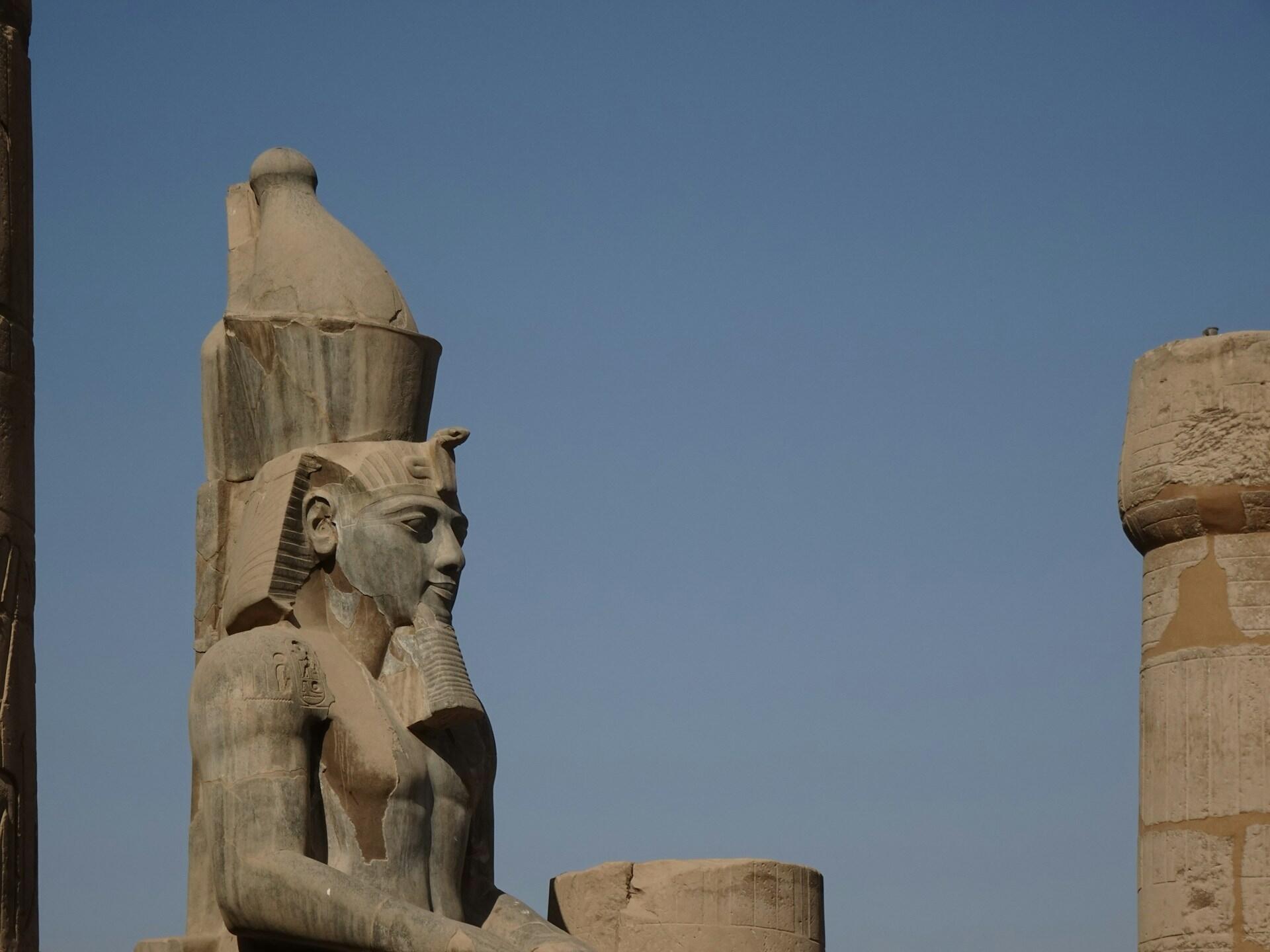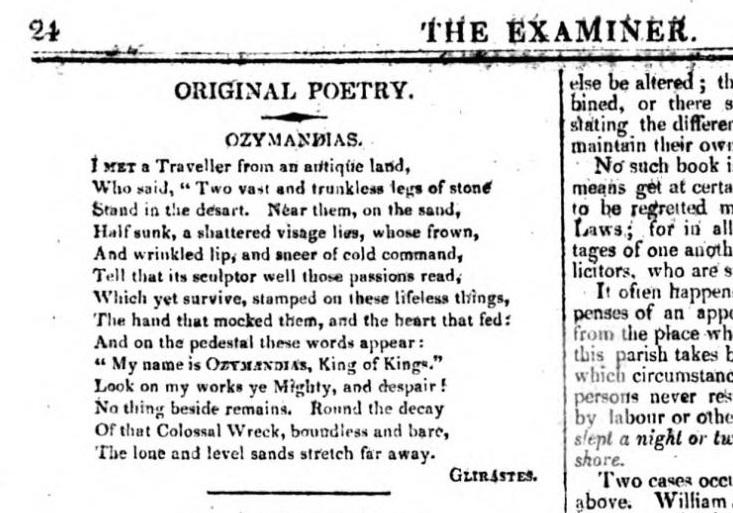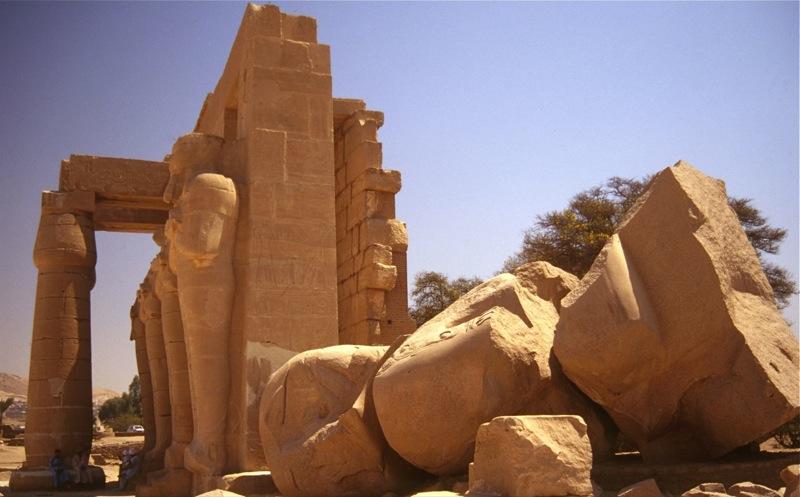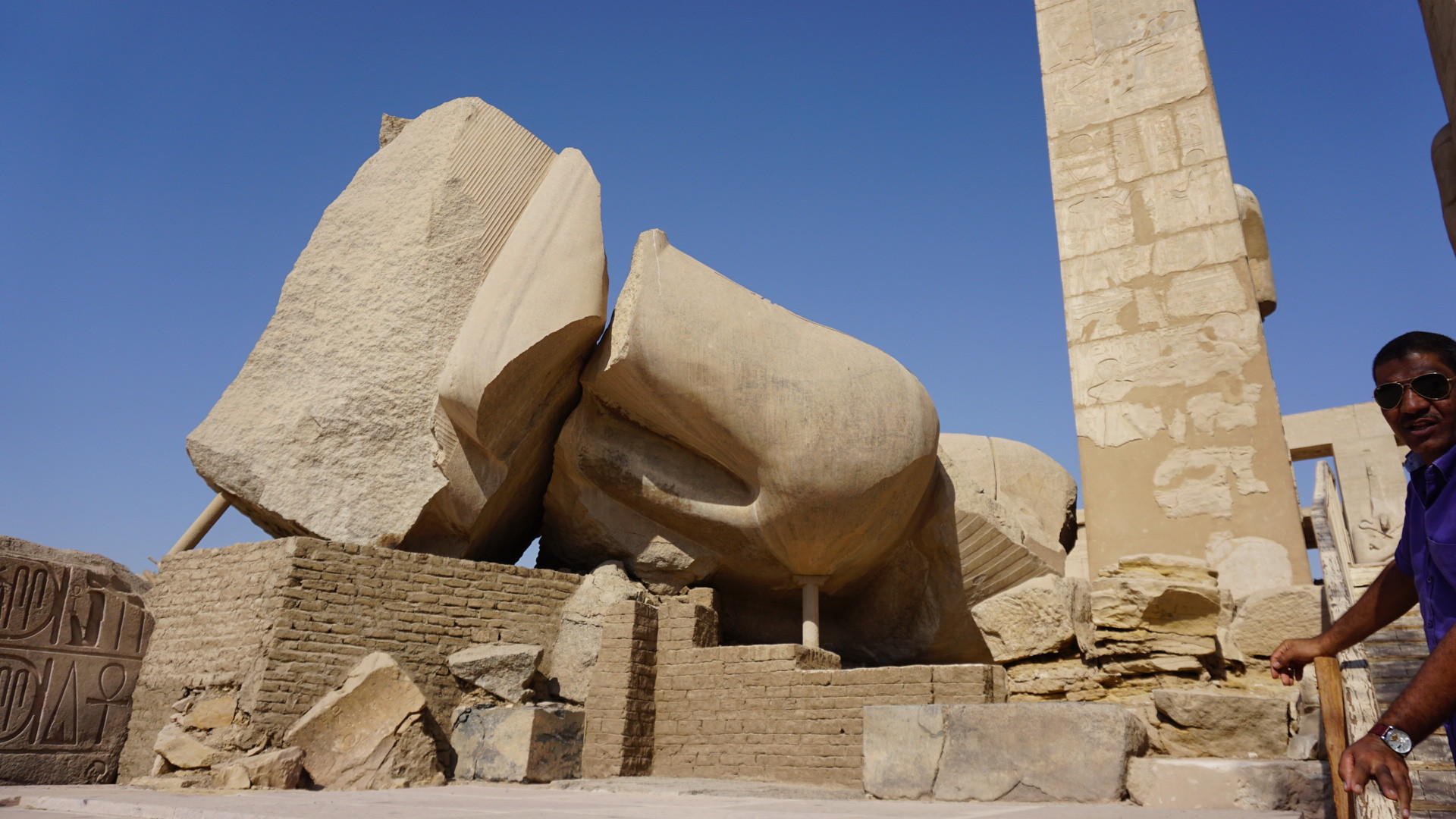Percy Bysshe Shelley's poem Ozymandias, published in 1818, is just fourteen lines long. Still, it packs a punch as it explores themes like power, hubris, time, decay, and the relationship between humanity and nature. Why does Ozymandias remain so important centuries after it was written? GCSE students must understand this poem's themes and provide evidence of your assertions, as laid out here:
| 💡Element | 💭Theme | 🔎Evidence | ✍Author's intent |
|---|---|---|---|
| Form | Established power structures | 14 lines. The traditional form of a Petrarchan sonnet, but with irregular rhyme scheme. | To demonstrate that established power structures can be changed |
| Structure | Impermanence and futility of human power | caesura enjambement A short sentence. | To represent the statue breaking The uneven pattern mirrors the broken statue The finality of decay and death. |
| Language | Imperfection and futility of human power The power of nature | The broken statue alliteration - lone-level, boundless-bare, eg | Meant to be a permanent symbol, now a 'colossal wreck'. repeating sounds echoes the desert's expanse. |
| Context | Human power versus the power of nature | The statue's inscription. The statue's face half buried in sand. | to comment on the fleeting, futile nature of human power. The “boundless” desert swallows the now-forgotten king. |
| Tone | Elegiac Ironic | The mournful relating of Ozymandias's once-mighty legacy. Contrasting Ozymandias' boasting with the 'shattered visage' that remains of him. | Pointing out the absurdity of immortality and unending power. Ozymandias’s hubris relied on his image as a powerful ruler, yet all that remains are broken parts of a statue. |

💪Ozymandias Themes: Power and Hubris
My name is Ozymandias, king of kings: / Look on my works, ye Mighty, and despair!
Percy Bysshe Shelley, from Ozymandias

To break down the poem: a traveller describes the remains of a statue in the desert. It was a monument that once glorified the powerful king, Ozymandias - Ramses II, in Greek. The quote above is the inscription on the statue.
Power and hubris aren't just Ozymandias themes, we find them in many forms of literature. The idea that “pride comes before a fall” is a common theme in many poems of Shelley's era. This level of hubris is a key Ozymandias theme.
Defining 'power' (paʊə')
Having a lot of control over people.
"CEOs wield great power over their companies."
Defining 'hubris' (/ˈhjuː.brɪs/)
excessive pride and arrogance.
"He was punished for his hubris."
"Look upon my works, Ye Mighty, and despair!"
This line is filled with arrogance. It shows that Ozymandias believed himself so powerful, other rulers should feel weak and hopeless in comparison.
How the Traveller Interprets This Ozymandias Theme
- The statue is broken and crumbling.
- The great works Ozymandias boasted about have vanished into the sands of time.
This stark contrast highlights the emptiness of Ozymandias' pride and the temporary nature of human power. No matter how mighty a ruler may think they are, time will eventually erode their achievements, reducing them to nothing more than ruins.
The traveller's tone is slightly mournful and bemused, as though saddened and unbelieving that such a manifestation could be so easily felled. Shelley gives the traveller a touch of humility, too, as he acknowledges how nature always wins, in the end.
Shelley uses Ozymandias as a symbol of all leaders who become too proud and forget that their power, like everything else, is fleeting.
⏳Time and Decay as Key Themes in Ozymandias
The entire poem can be summarised as Shelley’s thoughts on how time inevitably leads to decay and the erosion of all things, no matter how strong or grand they may seem. Time and decay are powerful themes in Ozymandias that work hand in hand with the poem’s exploration of power.

The traveller in the poem describes the statue as "half sunk," with a "shattered visage" lying in the sand. The use of words like "shattered" and "trunkless" (in this context meaning without a body) suggests that the statue, once a magnificent symbol of Ozymandias’s power, has been worn down over the centuries.
Decay reminds us that time is the great equaliser.
Even the mightiest empires and most powerful rulers are not immune to the effects of time.
In this poem, the traveller relates the pathetic look of the old empire with disdain, to show how these human structures and hierarchies fade.
Shelley's use of literary devices and explorations of this theme makes the reader reflect on the transient nature of life. From there, we can see the futility of trying to achieve immortality through earthly power.
Could Shelley’s musings relate to the British Empire?
The period we call the imperial century describes the arc of the British Empire. At its height, it comprised 10 million square miles of territory and roughly 400 million people. Perhaps Shelley’s looking to the past was actually about the events of the 1800s and earlier.
Shelley's Intention for This Ozymandias Theme
- This author was a staunch anti-monarchist.
- He especially reviled George III, who was the king at the time of writing.
- He likely wrote about a traveller to distance himself from any political interpretation.
- Through this detached narrator, Shelley was free to express his personal views of the monarchy.
🌿Nature as an Ozymandias Theme
Nature plays a subtle yet significant role in Ozymandias. The poem does not focus on nature but its presence is felt, especially in the depiction of the desert where the statue lies. The desert surrounding the ruins of the statue serves as a reminder of nature's power.
The desert has not only outlasted the statue but also contributed to its decay. Nature has reduced Ozymandias's might to nothing while itself remaining powerful. This highlights the idea that nature is indifferent to human achievements and will eventually reclaim everything.

The setting of the desert also adds to the sense of isolation and abandonment in the poem. The statue is described as standing in the "lone and level sands" that "stretch far away,". This imagery emphasises the emptiness and insignificance of Ozymandias's great empire, and that human power is no match for nature.
Describing the 'great and powerful ruler's remains as shattered is ironic.
Ozymandias' power and hubris stemmed from his belief that he was great and powerful.
Now, all that remains of him are a few broken statue parts.
Shelley's Intention
Not even nature could erase the ruler's cruel, contemptuous countenance.
Shelley communicated his own anti-monarchy, anti-military stance through this imagery.
Ozymandias intended to be remembered forever through his stone likeness.
Shelley points out that, no matter how powerful, time will destroy relics, and humans will be forgotten.

📜Ozymandias Poem Analysis: Figurative Language

Your Ozymandias analysis must include Shelley’s use of vivid imagery and figurative language. His word choice and phraseology are key to conveying the themes of Ozymandias. Imagery, the use of descriptive language to create pictures in the reader's mind, is particularly strong in this poem.
The traveller’s description of the statue's "wrinkled lip" and "sneer of cold command" paints a picture of a ruler who was both cruel and proud. These images help the reader understand Ozymandias's personality and the kind of power he wielded.
Shelley also uses figurative language, such as irony, to deepen the poem’s impact. Irony is when the opposite of what is expected happens. In Ozymandias, the inscription on the statue boasts of the king’s great power, but the reality is that nothing remains of his empire. This ironic twist emphasises the poem's message about the fleeting nature of power.
The Use of Metaphor
Another example of figurative language in the poem is the metaphor of the "colossal wreck." This phrase not only describes the literal state of the statue but also symbolises the downfall of Ozymandias's empire. The once-great kingdom is now nothing more than a "wreck," both physically and metaphorically.
The entire poem is a metaphor to represent Shelley's disdain for royal rule and militarism.
🗿The Sculpture

The sculpture itself deserves its own section of analysis. The whole use of the statue can be seen as a symbol of hubris which represents the legacy of Ozymandias.
And, by extension, the shattered statue speaks to the legacy of all rulers who seek to immortalise themselves through monuments and grand achievements.
The fact that the statue is broken and buried in the sand symbolises the inevitable decline of all human endeavours. No matter how grand a statue or monument may be, it cannot withstand the forces of nature and time forever. The "shattered visage" and "trunkless legs" symbolise the broken remnants of Ozymandias’s power and ambition.
King Ramses II, the model for this poem, built more monuments and sired more children than any other Egyptian king, according to National Geographic.
The expression on the statue's face, with its "sneer of cold command," captures the arrogance and tyranny of Ozymandias. Ramses II was known to be ruthless, but perhaps it is his obsession with legacy that saw Shelley immortalise him in a poem.
This expression is frozen in time, a reminder of his personality, but it also suggests that such traits ultimately lead to downfall. The sculpture, once a proud display of strength, now serves as a cautionary symbol of the dangers of pride and the limits of human power.

🧐Test Your Knowledge of Ozymandias
How well do you know the themes, literary techniques and language in the poem? Get ready for the exam with our revision flashcards!
📖Learn English and Analyse Poetry With Superprof
Unlock your potential, prepare for GCSEs and master English literature with Superprof. Our range of tutors across the UK can help you to revise and analyse timeless classics like Ozymandias while honing your language skills.
Whether you're preparing for exams or just passionate about literature, our expert tutors will guide you through complex themes and sharpen your analytical abilities. With personalised lessons tailored to your pace, you'll gain confidence in understanding and interpreting poetry and communicating your points, all while improving your overall English proficiency. Start your journey with Superprof today and explore the rich world of English literature!















